| |
“The Devil's Men, also known in a less explicit version as Land of the Minotaur, was a co-production between the United Kingdom and Greece, sort of like the marriage of Queen Elizabeth II and Prince Philip only with far less respectable results.” |
| |
Reviewer, Graeme Clark, The Spinning Image* |
There’s a certain sense of risk or roulette playing when companies send out review discs. If you’re an Outsider regular, you will know that we are almost unfailingly positive and can find things to like or respect even in the direst of productions. We agree to review many discs sight unseen simply for the adventure and the expanding of our own cinematic knowledge. There’s a real thrill in settling down to watch a film when all you know about it is its title and that it stars two horror stalwarts, Cushing and Pleasence. Well, I sat there and was somehow magically transported back to the days when flares were cool (the trousers I mean, although there are plenty of lens flares in the Greek winter sunshine) and horror films possessed a certain innocence long gone from today’s efforts. And because of the film’s outright shoddiness and technically appalling craft, it became, oh so very easy to adore. I am shocked that no extra features or booklet has mentioned its technical failings. It’s a major part of its appeal.
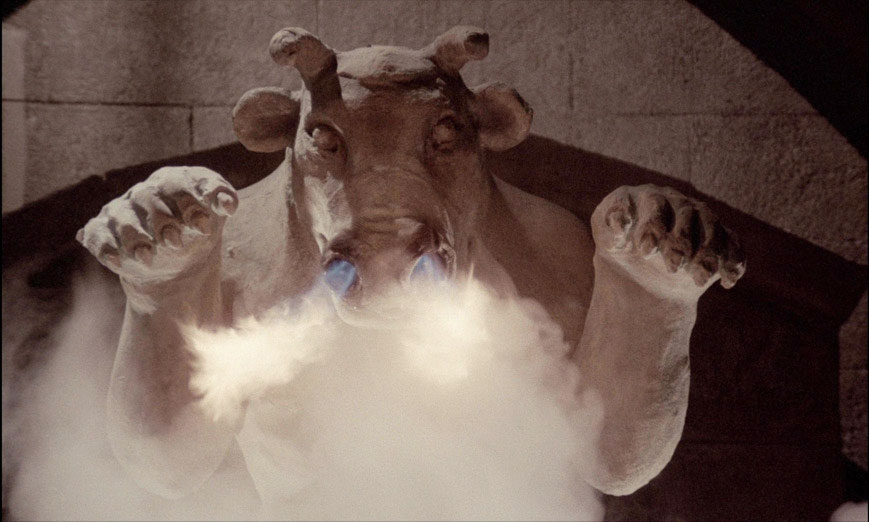
Young people visiting a Greek island are being sacrificed to an underground Minotaur statue whose nostrils must have chafed given the acetylene flame jets bursting out from them. The mythical beast is a man with a bull’s head. The statue stands naked so you could be forgiven into thinking that this is a literal ‘cock and bull’ story. Adorned in his fancy red robes, Peter Cushing as Baron Corofax presides over the ritual killings in his age-ruined castle. The actual murderous acts are oddly perpetrated by a possessed young girl with presumably an ancient knife. We’re not spared the gore but it’s brief and swiftly cut away from. So far I’m watching the awkward love child of The Wicker Man and The Devil Rides Out with none of those two horror classics’ craft. Father Roche (Pleasence with an on/off Irish accent) sends letters to a private detective friend (who deals in ‘facts’) in New York concerned about the fate of these young people. When more visitors arrive at the island, Father Roche tries to convince them to stay well away from the ruins of the castle but Ian (Nikos Verlekis), Tom (Bob Behling) and Beth (Vanna Reville) take off in the middle of the night in their camper van and set up tents right next to the imposing castle. Immediately, you think that this isn’t going to end well. Ian and Tom descend into the stalagmite festooned and quite striking underground cave while Beth shops for food. Oh, the 1970s, we’ve not missed you one bit. You’d think the boys would check their progress seeing a two bladed axe symbol up ahead but no. They find the bodies of the sacrificed victims and then the Minotaur pops up and reminds them that, now they are here, it’s only death that awaits them. Yes, the stone statue can talk. Fair enough. It’s always useful to know the ground rules. Father Roche implores his detective friend Milo (Costas Skouras) to travel halfway around the world based on his religious certainty that the Devil himself is behind this bloody affair. He pitches up and later so does his girlfriend Laurie (Luan Peters). Events get out of hand. It’s up to Father Roche to convince his gun-toting friend that the forces of evil can only be defeated by religious means. Well, let’s just say that I’ve never seen Peter Cushing explode before. Wash my mouth out with soap. Of course I have, just after the following line of dialogue… “You may fire when ready.” No? A modest science fantasy called Star Wars released a year later in 1977. Oh wow! Two movies that feature Peter Cushing exploding were released in the US on the same day… Star Wars and The Devil’s Men – 25th May 1977. Wow! It’s coincidences like that, and realising them, that make my world go round.
You just knew from the title what you were in for. What I mean by that is that there is a black fingerprint on screen after the title forms out of the beast’s nostrils… for 47 frames! I was beside myself with glee. These filmmakers put up with the screw ups and marched into the wind taking no notice of the carnage of bad craft left in a pathetic heap behind them. And very noticeably, that broken squeaky wheelbarrow sound effect used to such ominous effect in Night of the Demon is brought in here presumably to scare us? Or to remind us of a better movie? The biggest culprit which manages to nudge you every second of the running time is the sound or specifically, the synchronised dialogue. I cannot even swear that the English speaking cast were not all ADRed (Automated or Additional Dialogue Replacement depending on the web page source of clarification). Literally ‘in other words’, actors come in and recreate their performances to sync up with their original filmed delivery. I would say that all the Greek speaking cast were ADRed. But the English overdubs give you the impression the screenplay was rewritten in post because mouths are closed as characters speak, lips flap when no dialogue is heard and there are dozens or even a hundred examples throughout. I cannot stress how important sound is to a film and especially a horror film. That leaden flatness of re-recorded sound does nothing to ramp up the tension and it has to be said, every character talks on the nail, expressing themselves in painfully clichéd ways and sounding like they’re verbalizing the thoughts that come into their mind. Perhaps this is simply a translation problem but it makes the film far more entertaining than it has the right to be.
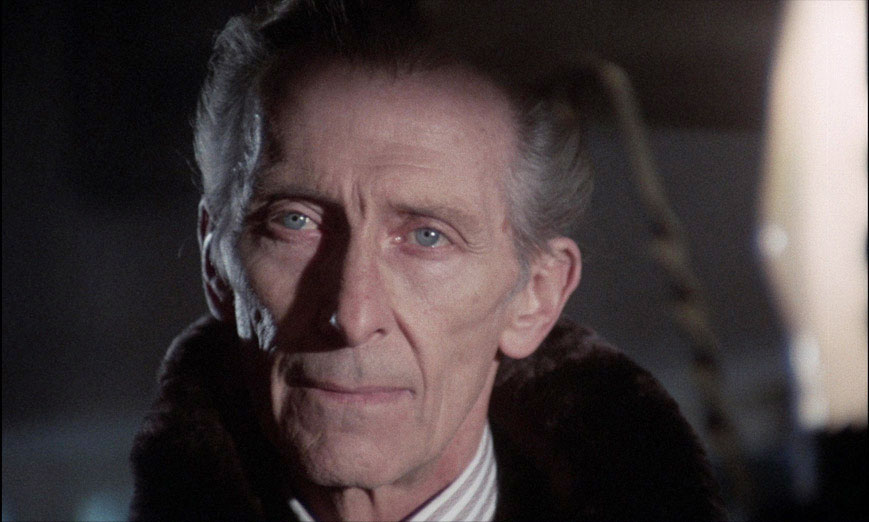
An English/Greek co-production directed by Costas Carayiannis (as credited but in other sources he is Kostas Karagiannis), The Devil’s Men is a real oddity. We never hear the red-costumed evil overlord’s reasons for the sacrifices. We are asked to believe in the supernatural element when all we’ve got to go on is a Minotaur statue brought up from beneath the stone floor by a minion pulling a chain with a Minotaur symbol in bronze hanging from it. Oh, and there’s the impervious-to-bullets henchmen that signify something paranormal is going on. There’s no sense that the statue has any supernatural powers and apart from chanting inane slogans – “We cover our faces in sight of our Lord!” – that on the face of it, makes less than zero sense, none of the human participants seem to be terribly invested either. The acting is average at best. Pleasence seems minutely more invested in the role of the good guy priest but poor old Peter Cushing seems to be staring at the sacrifice set wondering what on Earth he did to deserve this gig. It’s joyously and utterly hilarious. There are focus issues, numerous zooms, a technique that even by that time was falling hard out of fashion and wayward framing. In the first scene of sacrifice, it’s so hard to be convinced of the brutality and horror of the situation mostly due to the slightly gauche responses of the lambs about to be slaughtered. In this scene we are not shown the victims being bound by chains and so as it unfolds, you’re thinking “Run away! Fight for your lives!” until they are despatched by an ancient dagger and a slightly bored teenager killer wielding said weapon slowly and unconvincingly. In fact if you examine this scene closely you can see the retractable blade retracting and the ‘blood’ being spurted from its handle. It’s even more entertaining playing it in slow motion.
Zoran Perisic is credited with the optical effects, a name strongly connected with and celebrated for making Superman fly in 1978. Brian Eno’s score actually comes out of this whole experience with its metaphorical head held high. It’s electronic drone nature actually enhances what parts of this film were supposed to be frightening and despite all the other elements, the score is worthy of a ‘Tick, very good!’ Karl Jenkins’ original title song is sung by Paul Williams of all people (the booklet corrects my assumption. This Paul Williams is a Brit from the group, Juicy Lucy. No, me neither). It is in fact the end title song, and it comes from absolutely nowhere and suddenly this prog rock tune starts up with lyrics as bad as the actual dialogue (“Devil! Father of Lies. Devil! Spirit of Evil! Waiting for the sacrifice!”). By the time you get here, the silliness has gone peak and you listen to this song and wonder how films like this actually get budgets. The song also plays over black spacing for most of its running time which I found strange. Oh, one last shout out to actress Luan Peters who died in 2017. I couldn’t place that accent or face despite its familiarity to me. It’s only when I imagined her voice sporting an Australian accent did her identity click. She played the Australian tourist who stayed at Fawlty Towers, the buxom beauty that Basil managed to mistakenly grope while testing a breast-shaped light switch.
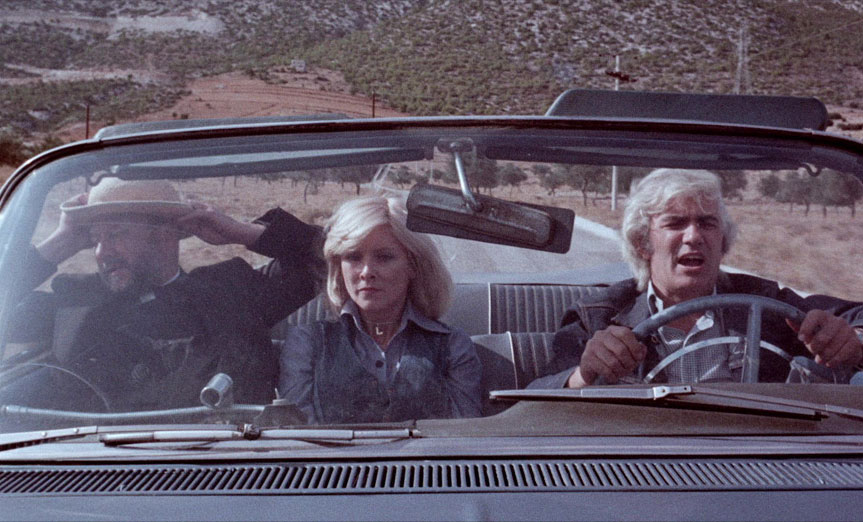
Depending completely on your regard or lack of for homegrown British horror which in this case is fifty per cent Greek, you will enjoy The Devil’s Men for the silliness it is or disregard it for the same reasons. Technically it falls short in many departments and it’s as frightening as a tea towel but as a piece of cinema in the genre of ‘We Really Tried’, it’s well worth watching and enjoying its trashier aspects. Devil! Father of Lies!
There are two presentations of the film: The Devil’s Men (94 mins), the original cut; and Land of the Minotaur (86 mins), the shorter US theatrical version without the nudity and selected gory shots. Both are presented in the 1.66:1 aspect ratio. Scanned from the original negative, the films are surprisingly clean and both contrast and colour are pleasingly rendered. Several shots are simply soft, presumably shot out of focus, surely not purposely. There are a few library shots, easily flagged by the increased amount of grain but on the whole, the film has scrubbed up well.
Both versions feature the original mono audio which feels a bit flat and over-dubbed with nary a care for sync.
There are new and improved English subtitles for the deaf and hard-of-hearing.
Audio commentary with critics and authors David Flint and Adrian J Smith (2022)
Flint and Smith, who have their own fan websites, clearly adore this film and films like it. Other criticisms are batted away as matters of taste. Both have done their research and know all about the Greek actors and the thriving Greek film industry in the 70s. They are very appreciative of the locations. They cite their sources which is a courtesy all too uncommon these days. They muse on what was popular in the day, especially conspiracies. The limits of female nudity is a topic covered. Both leads get career summaries and appreciation. Their mutual recall of a bevy of horror movies is impressive. Arthur Rowe, the writer gets a full career appreciation. The great Michael Powell gets a mention as he was planning to shoot in Greece at the time and was good friends with producer Frixos Constantine. He has his own extra – see later. The two chat about the film’s marketing. They do admit that The Devil’s Men is not a classic (phew). Finally they have a great deal to say about the rather silly end title song. A hugely engaging commentary by two men who really know their stuff.
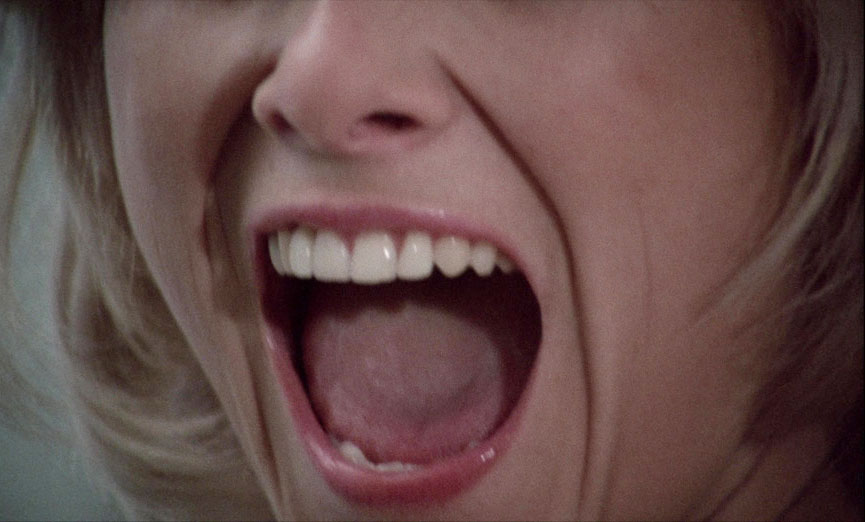
The John Player Lecture with Peter Cushing (1973): archival audio recording of the legendary actor in conversation with David Castell at the National Film Theatre, London (91’ 23”)
Peter Cushing, as it is well-known, was a complete gentleman. He goes through his own history with the lovely surprise that he flirted with another name, Peter Ling before his acting career began. He skips lightly over trouble with horses, his experiences on his first movies and a jaunty trip through his Hammer career. He has a lovely rapport with his audience. As is the nature of these recordings, there’s no mic on the audience members when they ask questions but Cushing often repeats them for others’ benefit. As I said, a gentlemen. I didn’t realise that Cushing was in the Laurel and Hardy short, A Chump at Oxford. He covers his television Sherlock Holmes series and how pressurised the cast and crew were handed TV schedules and there’s a lovely quip about his first meeting with Christopher Lee. Despite being known as a horror actor, Cushing is not a fan of explicit gore. In the last minutes, he delineates how important the craft of editing is especially to a director. I can’t argue with that. A lovely extra with the incomparable Peter Cushing.
This Life and the Next (2022): producer Frixos Constantine reflects on working with great actors and making the film(7’ 48)
This is a short but rather charming interview with the producer of The Devil’s Men. He comes across as earnest and grateful for being a producer, something he wants to be in the next life too. He also compares the differences between lesser actors and those actors who’ve earned their reputations, the former being difficult and the latter kind and accommodating. It’s not the worst generalisation even if it is one. I also have massive respect for this man for another reason. Please see my review of the booklet further down.
Feature-length Super 8 version (94 mins)
Unsurprisingly filthy with a soundtrack replete with pops and damage, this 8mm version is at least the longer uncensored version but that’s about its only plus. After all the trouble taken to restore these films, it can only be for completists that these 8mm versions are included. It’s like buying a brand new pair of shoes and getting an identical but pre-worn 20 year-old pair with holes and scuffs. Why would you ever wear the old pair?
Trailer (2’ 34”)
Heavily intoned voiceover prepares us via completely unconnected Tennyson poetry for the most terrifying film of 1977, Land of the Minotaur. Right. Squeezed in amongst the zooms are the beats of the entire film. In fact if you’ve seen the film and then see the trailer, it feels like the movie is condensed completely. A hard sell for a film that can’t hope to deliver on all promises. But as Peter Cushing reminds us in his interview, there are many points of view. My main problem is that I find its flaws so entertaining.
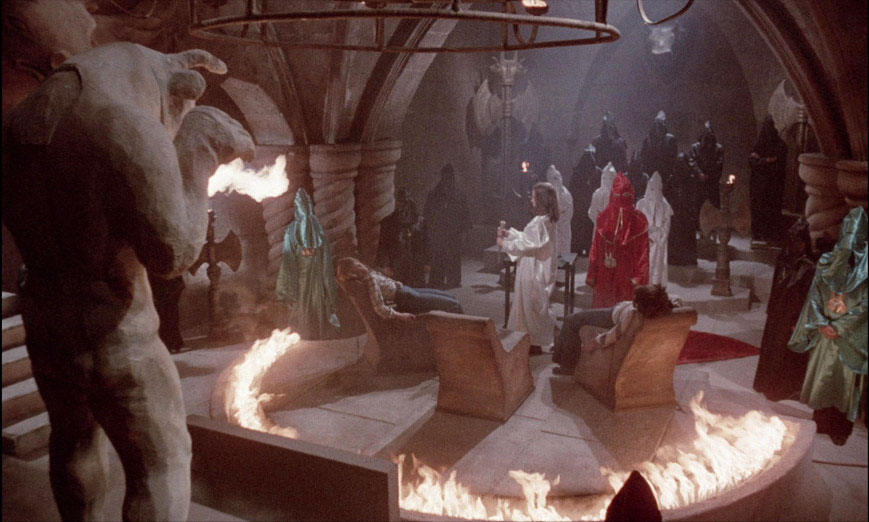
TV Spot (30”)
“Come with us…” A swift sweep through all the eye-catching imagery and added explosions and ridiculous words that talk the talk.
Image gallery: promotional and publicity material
Here we have 12 black and white high contrast production stills, 4 colour followed by 1 behind the scenes shot. Then we have 8 black and white front-of-house stills and reproduction of the full colour press materials with synopsis. Note that the original title is seen on this, The Devil’s People. Five posters for different territories come next and while some posters really do sell the idea of the Minotaur being monstrously alive, the tag line “Half-man, half-beast trapped in a world forgotten by time…” pushes this idea too, I rather enjoyed the last graphic poster which simply says “They were possessed!”
Limited edition exclusive 36-page booklet featuring a new essay by Andrew Graves, an archival interview with star Donald Pleasence, extracts from original promotional materials, an overview of contemporary critical responses, and film credits
His Hellenic Majesty Requests by Andrew Graves gives a solid overview to the film, its two stars and the director noting that after Peter Cushing was widowed, he packed his grief in to more understated performances. Graves has clearly done his homework with regard to the director’s work and while no mention of the shoddy film craft, he seems to be a fan of the film’s serious ambitions, something I find very tricky to square with my response to it.
Bart Mills’ 1976 Guardian Interview with Pleasence, Hiss and Boo Man, is quite revealing. You get a very strong sense of the actor’s character and tastes and it’s refreshing to read about an actor you’ve long admired who never broke into stardom. Up front about doing films for the money, he’s candid and sensitive and it’s a telling remark when The Devil’s Men (The Devil’s People in the article) comes up. Pleasence says “I was hoping you hadn’t heard of that one…” Quite!
An Electronic Murmuration by Robert Barry first published on the Electric Sheep website in 2013 features the work of Brian Eno and his electronic score.
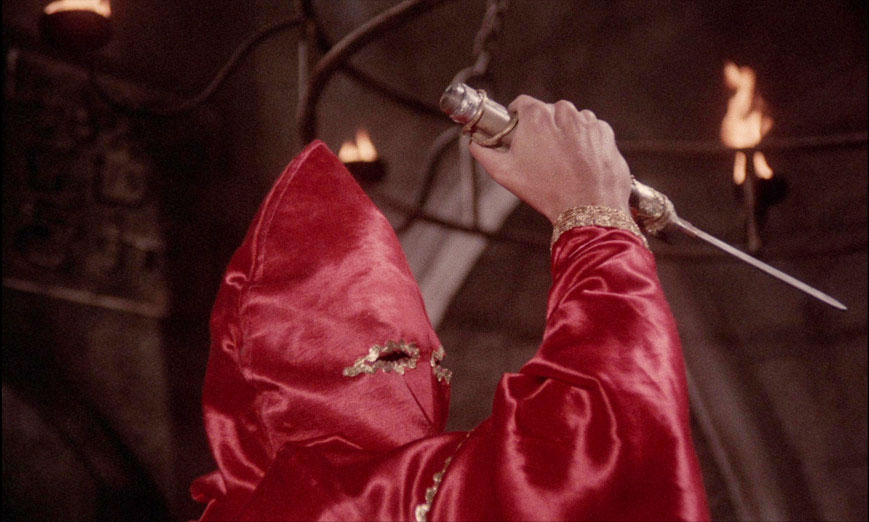
Poseidon’s Men: Michael Powell and Frixos Constantine is an real eye-opener. I have read both Michael Powell autobiographies and must have read this snippet but the names didn’t stick. Powell was ostracised from making films after the hostile reception to Peeping Tom. If there are crimes in the film industry, this is up there with the worst of them. How can a man of such prodigious talent be denied plying his trade because a couple of self-appointed ‘important’ people had it in for him. As I mentioned earlier, I have great regard for Frixos Constantine, the producer of Poseidon Films. He gave Powell an office to work from and served as a great friend when Powell was at his lowest ebb. The idea that Powell supported his friend Frixos in the making of The Devil’s Men astounds me. I wish he could have helped a little more.
Critical Response features the dependable Tony Rayns of the Monthly Film Bulletin, who was unconvinced by the film but liked Eno’s score. Then there’s an American review, scathing about the script and finally we have my beloved Cinefantastique’s Bill Kelley’s acknowledgement of its oddness and again enthusiasm about the score. But his first line did intrigue me… “This supposedly encountered such production problems that its producers nearly changed it to a comedy.” That is really easy to believe. And to be honest, that’s where I was going as I watched it.
The Devil’s Men is a very odd little exploitation horror film packed with rampant 70s sexism, dodgy acting, relaxed lip sync, woeful and indeed sunny blue skies day-for-night sequences, constant zooming and focus issues. It features some stunning locations and in its longer version a fair chunk of needless and gratuitous nudity. But somehow, despite its poor craft, it’s awfully likeable. You can feel the potential aimed for but the execution is simply not up to snuff. But if you are a horror fan, you should see it to add to your cineaste credentials.
|